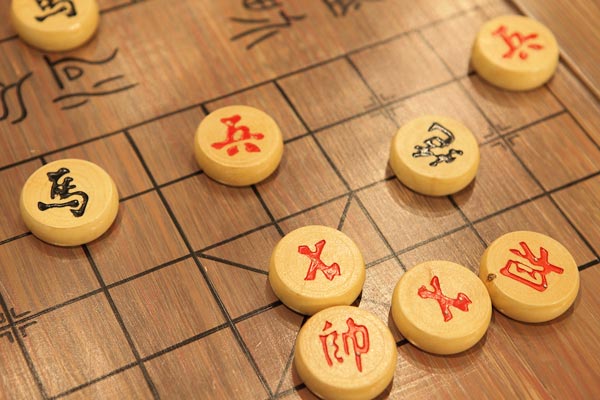Zuoquan Flowering Tune, a folk music popular in the Taihang Mountains of Shanxi Province, is one of the national intangible cultural heritages.
The style of Zuoquan folk songs began to take shape in the Sui Dynasty. In the 1930s, Zuoquan Flowering Tune was derived from Zuoquan folk songs. Zuoquan Flowering Tune is ingeniously conceived, with novel lyrics, and the supporting words and sentences highlight the strong local color, which is very appealing.

Zuoquan folk songs are divided into three forms: big tune, miscellaneous tune, and minor tune. Zuoquan Flowering Tune is a minor tune. Since the 1930s, a unique folk song art form, Flowering Tune, has been derived from the minor tune. Zuoquan Flowering Tune belongs to the "folk song style". Because the lyrics are exquisite and novel, and "flowering" is used as a metaphor, it is called Flowering Tune. Flowering Tune is mainly distributed in Zuoquan, Heshun, Wuxiang, and Xiangyuan counties, among which Zuoquan Flowering Tune is the most outstanding.
Form
Minor tunes are the main part of Zuoquan folk songs. They belong to the qupai music. There are two types: single repetition and multiple songs. They are suitable for people to hum when doing relatively easy work. The tune is short and the lyrics can be filled and modified by themselves. The lyrics are mostly 7-word sentences, with 10-word sentences and 5-word sentences occasionally. They can be narrative or lyrical. The style is clear, the content is rich, and it is easy to spread.

Tone
Zuoquan Kaihua tune has a simple tone and is deeply touching. Most of them are composed of two phrases that echo each other. The melody is mainly based on the progressive seven-tone scale, and large leaps appear occasionally, which are used to express the ups and downs of emotions and emotions, greatly increasing the appeal of the music.
Most of the Zuoquan Flowering Tune are love songs, with simple tones. Most of them are composed of two phrases that echo each other. The first phrase is a starting point, and the second phrase is the theme. The lyrics are mostly improvised by people working in the countryside. The first phrase is a metaphor for flowers blooming, and the second phrase tells the story. The so-called "flowers" can not only be plants, but also scissors, brooms, stones, etc. in daily life. For example, "The door is open and flowers are rushing in, and my brother walks in from outside the door", "The glass is blooming, and it is bright inside and outside, and I can see my eggs kissing from afar", "The yam eggs are blooming and forming lumps, and eating eggs kisses my heart and liver". The local dialect "Ah Le Ya Ya Dai", "Kin Le Dan Er", "Kin Le Qin Ya Me Dai Ya Le Dai" as supporting words and sentences highlight the dialect characteristics of Zuoquan, and also express a kind of intimacy and love.

Connotation
From the content revealed by Zuoquan Flowering Tune, we can see the essential meaning of love songs. Flowers are beautiful and pleasing. When flowers bloom, they are beautiful and express the love of young women for young men. It is a pursuit of beautiful love and a yearning for the continuation of life. It can be further found that in addition to the various metaphors of "blooming" full of fantasy and imagination in the lyrics, the dialect foil words in the blossoming tune are kind, natural, sincere, simple and pleasant. The most common foil word is "Xiaoqinqidan". The investigation of "Xiaoqinqidan" shows that "qidan" is the local dialect, meaning the fruit on the tree or the ground. For example, "yam eggs bloom and set qidan" in "Bitter Lovesickness" refers to the fruit. But more often it is personified, "qidan" refers to lovers, and the word "qin" is added to become "qinqidan". For example, "qinqidan went to the river to wash clothes, kneeling on the stone with legs"; "sparrows fly on the eaves, thinking that this qidan can't be seen in person". That is to say, since the flower has bloomed, it must bear fruit. Finding the lover and "kissing the egg" means getting the fruit of love. It can also be said that the effect of the supporting words sung in the blossoming tune in dialect cannot be replaced by any real words. At the same time, it also enhances the artistic expression and appeal, and highlights the charm of the love song.

Inheritance value
Zuoquan blossoming tune is a traditional Chinese folk music form. In the entire music professional foundation field and professional creation field, it can be said to be a unique Chinese folk song genre. It is unique and has its own context. The melody is clear and beautiful, the style is euphemistic and gentle, and the artistic conception is novel.
International communication
In October 2009, the Zuoquan blossoming tune art troupe went abroad for the first time and went to Istanbul, Turkey to participate in the International Art Festival.




